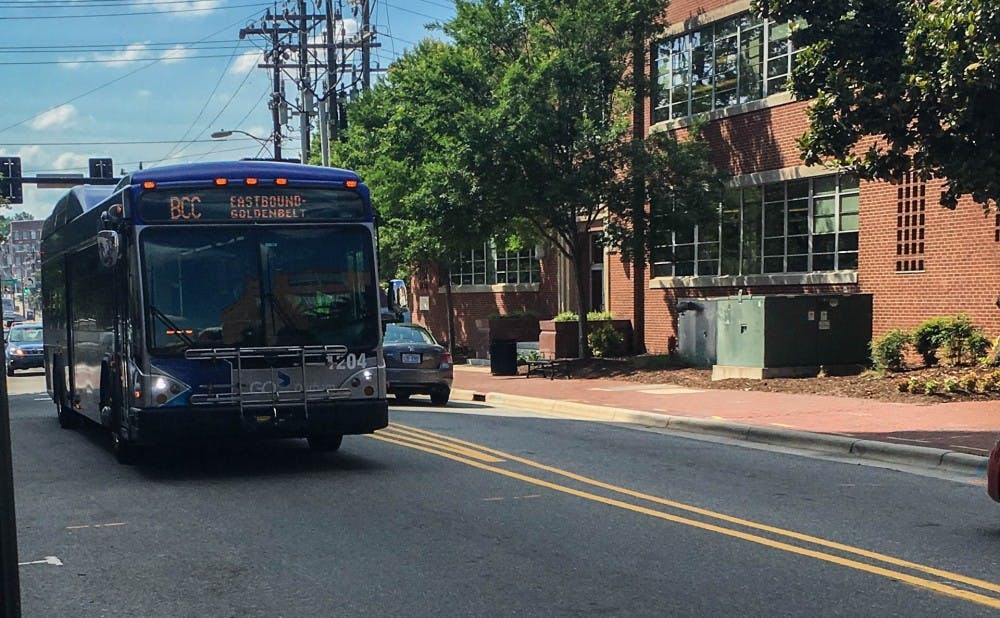Last summer, I was in Detroit as the city opened its highly-anticipated reinvestment in public transportation: the QLine. It’s an above-ground streetcar trolley that runs down Detroit’s main street, Woodward Avenue. It glistened and smelled fresh; its clean seats and big windows emanated newness. The QLine’s construction costs came out to be a whopping $144 million—a mix of public and private investment—but luckily for other passengers and me, it offered free rides all summer.
A friend from work got to go to the QLine’s grand opening and told me that on the morning it offered its first ride, there were hundreds of young urban professionals already dressed in business attire, most of them heading downtown to work. They were the age group that Detroit’s revitalization was so quickly attracting, and they waited with bated-breath to see the new transport-system. And they waited… And they waited.
While they were waiting for this exciting new streetcar, my friend said, three buses rolled past.
“It seems like at some point, all these investors just decided that we aren’t ‘bus people’ anymore,” they told me. “Whatever that means.”
Last fall, Duke decided that we aren’t “bus people.” Duke pulled its funding from the Bull City Connector (BCC), Durham’s only fare-free bus route and the one of only two buses that stops on Duke’s campus. However, unlike Detroit, Duke isn’t funneling its investment into a resource that even pretends to be remotely accessible to the public. Rather, Duke is piloting a downtown shuttle that will require a Duke I.D. to board. Duke withdrew its funding from a public service that made campus accessible to all residents of Durham. Then, it opted instead to create an insulated wagon to take students back and forth between downtown and their dorms.
Now, I know that students aren’t the only people in possession of Duke I.D.s. In fact, as Duke Magazine points out, the shuttle will also service Duke employees who live downtown. There are about 4,000 Duke employees currently living in the downtown area, and administrators like Vice President for Administration Kyle Cavanaugh laud the shuttle’s ability to reach them as our employee network expands.
But Duke employs nearly 35,000 people, and most of them don’t live downtown. This shuttle does nothing to reach Durham’s many neighborhoods, and it does particularly little to reach historically poor neighborhoods. It seems that its main aim is to give undergrads—and employees rich enough to afford an American Tobacco loft—a reprieve from riding the public bus when they want dinner at Mateo. This at the expense of the thousands of nonacademic and health system employees who relied upon the Bull City Connector to get to work.
I won’t pretend that I don’t enjoy Mateo. I am like most Duke students—I frequent many of the trendy new restaurants and shops that have so characterized Durham’s revitalization. Even more damning, I’ve probably been on the Bull City Connector a total of six times in my two years at Duke. In my lack of engagement with the bus line, I was complicit in the killing of the Bull City Connector. All of us were.
The GoDurham transit network serves nearly six million passengers annually. The Bull City Connector line serves as a vital link for passengers trying to access healthcare, food, financial services and employment. In 2015, 57 percent of its riders were black and 52 percent earned less than $15,000 per year. In other words, the Bull City Connector’s passengers are some of the city’s most vulnerable and most dependent on free public transportation. To Duke, however, they are expendable.
Duke made its decision to pull its funding because students like you and me weren’t utilizing a public service meant to make the city accessible to all. In doing so, it abandoned the residents of the city it calls home—even those of them that work in its halls and quads. It abandoned the Bull City Connector because of every student that I heard call the BCC “ghetto,” “sketchy,” or “jank.” It abandoned BCC because of every student who would rather pay for an $8 Uber than ride the bus for 10 minutes. It abandoned the BCC because students thought they were better than it.
It’s worth noting that the BCC route was pretty inaccessible from the start. It stopped at the far edges of campus, making it inconvenient for student passengers. It wasn’t well-advertised, and many students did not know it existed. But, although the BCC wasn’t a perfect bridge between communities, it at least made an attempt. Now it’s on the path to extinction, and we as students must acknowledge the repercussions our actions will inflict on the Durham community at large. In refusing to ride the Bull City Connector, we inherently said something about its passengers and their worth. We decided that we weren’t “bus people.”
So Duke killed the Bull City Connector, and the city is left considering the future of fare-free transportation in Durham. I guess now we’re shuttle people.
Leah Abrams is a Trinity junior and the editorial page managing editor. Her column, “cut the bull,” runs on alternate Fridays.
Get The Chronicle straight to your inbox
Signup for our weekly newsletter. Cancel at any time.

Leah Abrams is a Trinity senior and the Editor of the editorial section. Her column, "cut the bull," runs on alternate Fridays.

